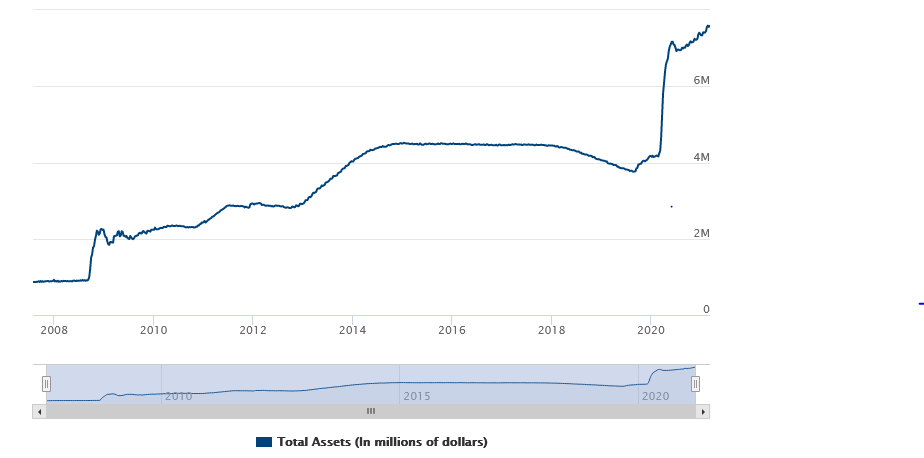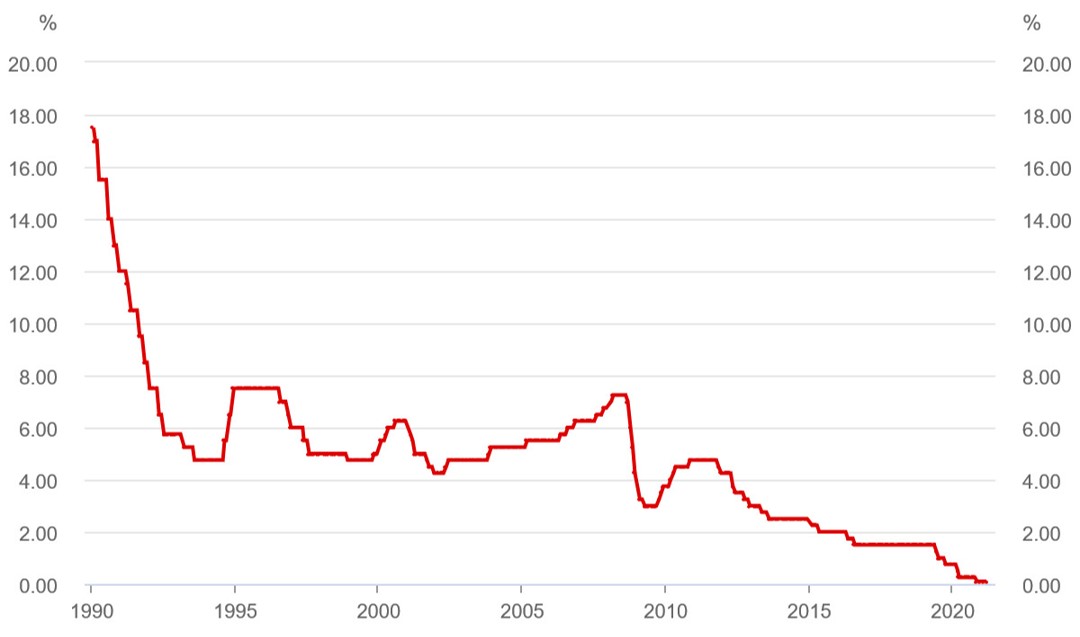Huge gains for investors from yield curve control
We explore why there is a meaningful probability that the Fed will move to yield curve control over the coming weeks or months. We argue this provides huge opportunity for multi-asset investors as part of a genuinely diversified portfolio, including in asset classes which are both loved and unloved currently by investors. In any case, it is a scenario which all investors should be aware of and consider. Yield curve control is a policy which provides significant opportunity for astute wealthy wholesale investors to become wealthier, continuing the trend we have seen over the last few years of central banks further concentrating wealth in the hands of the more fortunate.
Yield curve control is not a policy which we agree with or think is socially responsible or riskless, given it doesn’t contribute to a productive economy, further entrenches inequality and diminishes the purchasing power of labour or an honest day’s work. It produces greater medium-term and longer-term risks of financial and social instability. That said from a social perspective, in the interim – as dynamic investment managers capable of investing and profiting both long and short - we can aim to have our clients profit from policies such as these, both on the way up and the way down.
The Fed is currently engaged in an ongoing large quantitative easing program, having committed to buy US$80 billion a month in treasuries and US$40 billion a month in mortgage-backed securities. In recent times, they have exceeded even this massive rate of purchases.
Total Assets of the Federal Reserve

Source: www.federalreserve.gov/monetarypolicy/bst_recenttrends.htm, March 2021
Furthermore, the US just passed its third stimulus package, a further massive US$1.9 trillion handout of money borrowed from the future. As if that wasn’t enough, President Biden immediately flagged a circa US$3 trillion further stimulus package to “support” the economy. These are massive amounts of pro-cyclical stimulus which are not being offset by tax collections but which will require further very substantial debt issuance to be funded. Given the still low rates of bond yields compared to the massive and increasing global debt bubble, there is unlikely to be sufficient interest from private or foreign buyers to fund such large amounts of borrowing at current (still low) interest rates. In other words, rates will need to continue to rise to move towards a market clearing interest rate, or (in our view much more likely) the Fed will ultimately need to step in to buy even more treasuries to keep yields suppressed.
US rates have already risen significantly since August (circa 100bps) as the market has – not unreasonably – come to the view that a recovery in the economy and inflation is more likely than not, and that incredibly low yields are mispriced (as we have highlighted on numerous occasions). The FED has professed relative disinterest in these rising rates to date; after all, they have moved to a policy of wanting more inflation and can pretend for now that this is all a normal part of a recovering economy (if you ignore the massive stimulus and the reality that there is no evidence the economy can actually grow much without more debt!).
Although interest rates remain low, the speed of their ascent is potentially a huge problem for asset prices, particularly if rates continue to rise from here. US long duration treasuries lost 11% alone in February, while Australia lost an impressive 16%. This is quite a hit for a supposedly “defensive” asset and a meaningful (potential) challenge for those investors who are as interested in capital preservation as they are in capital growth. There are no longer any safe havens and every investment is potentially risky. The better way to reduce risk is through greater use of active management and greater diversification into alternatives.
%20Desert%20Road%20Livewire%20Custom.jpg)
A meaningful risk to asset prices (and not just bonds) remains should the Fed not move to “cap” yields in some way, and if the US economy continues to strengthen as it opens up post vaccines and as more stimulus gets put to work. Given we are now in a massive financially engineered debt bubble – created in no small way by outrageously inappropriate economic management over many years - it is unlikely the Fed will simply step back from ever increasing interventions and allow yields to rise. Letting yields rise rapidly or uncontrollably from here would quite simply put a wrecking ball through many asset prices as these have quite obviously been inflated by low yields and significant ongoing speculation of continuing central bank support.
So, what can the Fed do to prevent yields continuing to rise? One option would be to intervene through “Operation Twist” – which is extending the duration of their quantitative easing purchases to provide some support for the longer end of the curve. Alternatively, the Fed could emulate the Australians or Japanese, and move to fully cap yields up to a certain point on the yield curve, whether that be 3 years, 5 years or more.
3-year Australian Government Bond Yield Target

Source: https://www.rba.gov.au/statistics/ags-target/, March 2021
Interestingly, the RBA is leading the pack and is already engaged in yield curve. They are buying bonds to lower the structure of interest rates in Australia out to 3 years towards a miserly 0.1%, keeping yields very low compared to how the market would normally price these bonds. This is effectively financial repression and means that private bond holders are not getting a sufficient return on these holdings while inflation debases their capital. It is merely one of the reasons – and a very good one – why we believe investors need to look elsewhere for returns, and why alternatives are much preferable to bonds.
The RBA policy of yield curve control has led to an explosion in Australia’s favourite asset class for borrowing and speculation – residential property - in the last 3 months. Many property investors have reasonably inferred that short term variable interest rates will not be allowed to rise for a couple of years at least, and given their short-term focus (despite making a long-term investment decision!) that is all they need to know. Anecdotally, prices have already exploded in some areas by about 15% in 2021 as the RBA has once again managed to successfully re-engineer an Australian house price bubble. The policy has also, more usefully, had the effect of limiting Australian currency escalation, despite a massive increase in key commodity prices such as iron ore. As an aside, iron ore is now massively above the marginal cost of production and would appear at significant risk of price reversions over time, exposing the Australian dollar to some meaningful potential risk over time, as does the absolute paucity of business investment and low Australian productivity growth.
Should the Fed move to intervene even further into bond markets – as we believe it will in order to fund the huge amounts of bond issuance – there will be significant opportunity for investors and speculators alike. The Australian example of investors further preferencing their favourite speculative assets would likely be seen overseas. We outline some of the opportunities below as we postulate where investor capital will likely flow.
Firstly, investors may correctly infer that the Fed is sacrificing the US dollar. As yields rise, the US dollar might otherwise be more attractive to offshore investors chasing higher yields and growth, particularly when hedged back into their own currencies. US dollar weakness in 2021 is an extremely consensus call. Nonetheless, if US yield curve control is instituted, a weaker US dollar will likely result and the consensus will prove correct. A weaker US dollar may be beneficial to many asset classes.
Secondly, US dollar weakness would be associated with a further loss of confidence in fiat currencies, which can push capital into superior stores of value than cash or fiat currency. If investors emulate Australian investors – pushing up their favourite speculative assets – they may continue to push Bitcoin and other digital asset prices higher. Higher Bitcoin prices are another relatively popular call, albeit a much more controversial one than US dollar weakness. (Interestingly, Bitcoin was a wonderful, rather obvious non-consensus buying opportunity a year ago, when it would have been embarrassing to disclose you owned it! Significantly, this was potentially the biggest investment opportunity of our generation, missed by many asset allocators. Importantly, this highlights the benefit of a strong PM-led investment process in a diversified fund, in lieu of the more typical consensus driven investor committee approach, as the latter would have almost certainly blocked any call to buy it.)

Source: Stephan Pastis, Twitter, 27 January 2021
Thirdly, if we continue to see a recovering US economy and stronger growth and inflation while yields are suppressed, this will cause another meaningful decrease in “real yields” (inflation adjusted yields). This will have a potentially explosive effect on precious metal prices, given these are most highly correlated with real yields. Precious metals currently remain very unloved – and importantly in contrast to the above opportunities – a highly contrarian, unpopular and under-recognised opportunity. Precious metal prices would rise meaningfully higher over the next couple of years and provide strong risk-adjusted and additive returns to a portfolio. Again, precious metals are typically not seriously considered by many asset allocators despite their stronger diversification benefits than many financial assets, in our view to the obvious detriment of their investors. Those who value diversification – arguably the only “free lunch” in finance – should at least consider precious metals exposures given the appropriate time horizon.
So, what can investors do?
We live in crazy times economically and politically, and while there is much potential opportunity, this should generally be approached prudently and in alignment with investors’ own objectives. Much wealth transfer and destruction will ultimately occur as a result of central bank and fiscal imprudence, and this may occur erratically and quite unpredictably given the current market structure and speculative or non-fundamental focus of most market participants (many behave like speculators or simply don’t change their asset allocations meaningfully no matter what). It is hence important to remain risk focussed, have an appropriate time horizon, and seek genuine diversification with quality investments and managers whose approach is aligned with investor’s real objectives and who can benefit from a wide mandate. Investors must have the flexibility and willingness to seek out the best opportunities globally – whether popular or not - while diversifying among the numerous great active management opportunities available today. The traditional complacent portfolio or asset allocator is clearly no longer the best way forward in the world we live in today.
What are we personally doing with these insights?
The above analysis is an example of part of our top-down work and process which leads us to investigate certain asset class opportunities. Having identified potential opportunities, our process then leads us to consider how best to access and implement these. Examples of some of the considerations for us include:
1. Precious metals. We want exposures that create value beyond the asset class return alone, enabling multiple ways to win. We have a value-adding precious metals exposure which we expect to do very well over the next two to three years and massively outperform the asset class return.
2. Digital asset inefficiencies. While Bitcoin and digital assets are a highly risky (and volatile) opportunity set with numerous issues to consider, importantly - and highly relevant to our value-adding approach - they are extremely inefficient, providing significant opportunity for skilled managers to prosper. While there remains a potential ‘asset class’ opportunity, we are moving towards recognising that the best way to play this space, particularly given our downside risk focus and focus on risk-adjusted return, is with active managers. These managers should ideally be located at the heart of where the action is and be able to benefit from both rising and falling markets. Long/short managers are best able to profit from the volatility, and are not simply reliant on rising prices to profit or making leveraged bets on the asset class. Most importantly, if Bitcoin falls 80% (as it can), they can protect capital. There is opportunity with this style of investing whether you love or hate Bitcoin, and whether it is going to $250,000 or $1,000. Hence, these are attractive investment options regardless of your views on the space (and we’re sure you have some!).
These are just a small selection of the opportunities that can be built into a diversifying - and more genuinely diversified - portfolio for investors, but which sadly many investors aren’t and won’t benefit from. Taking full advantage of opportunities like this requires an alternative approach and an active well-researched fund manager with a broad mandate and the courage to invest differently, with dynamic rather than fixed asset allocations. Accessing the best wholesale opportunities globally isn’t easy for folks to do at home. Importantly, any investment needs to be sized correctly so that downside risk is properly managed, and experienced portfolio management and risk management skills are hence essential.
The last 15 months has been a wonderful time for astute active investors to profit. It was hence sad to see so many wealth managers and funds blow up with catastrophic losses in the COVID crisis, permanently impairing their investors. In our view, wonderful opportunities and double-digit annualised returns will continue for those with genuine capability, as long as downside risk is carefully managed. As we have written about previously, further crises appear baked into our future given recent massive economic mismanagement and debt-fuelled asset price elevation around the world. These crises will need to be skilfully managed and mitigated to enable long term wealth creation and compounding. But thanks to central banks and governments around the world, riches await the wealthy wholesale investor with substantive assets investing with master asset allocators.
Not already a Livewire member?
Sign up today to get free access to investment ideas and strategies from Australia’s leading investors.

